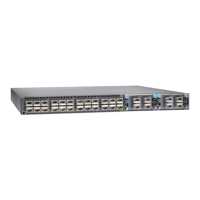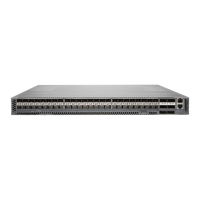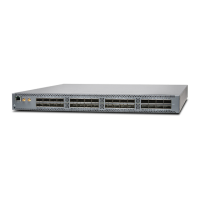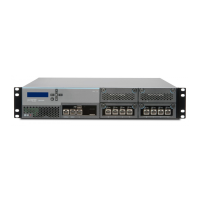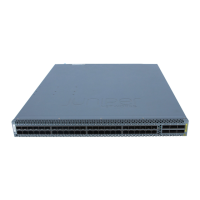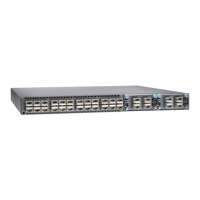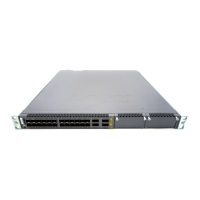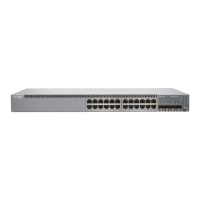In a preprovisioned configuration, you can explicitly configure a member with the linecard
role, which makes it ineligible for functioning as a master or backup Routing Engine.
In a configurationthat is not preprovisioned, the members that are not selected asmaster
or backup function as linecard members of the Virtual Chassis configuration. The selection
of the master and backup is determined by the mastership priority value and secondary
factors in the master election algorithm. A switch with a mastership priority of 0 is always
in the linecard role.
Any switch can function in the linecard role in a mixed or non-mixed Virtual Chassis.
In a QFX5110 Virtual Chassis made up of QFX5110 and QFX5100 switches, we recommend
configuring only QFX5110 switches into the Routing Engine role.
In a mixed QFX Series Virtual Chassis made up of QFX5100 switches with QFX3500,
QFX3600, or EX4300 switches, we recommend configuring the QFX5100 switches into
the Routing Engine role. If the mixed Virtual Chassis does not contain QFX5100 switches,
we recommend configuring QFX3500 or QFX3600 switches into the Routing Engine role.
Member Switch and Member ID
Each standalone switch that supports Virtual Chassis is a potential member of a Virtual
Chassis configuration. When one of those switches is powered on, it receives a member
ID that can be seen by viewing the front-panel LCD or by entering the show virtual-chassis
command. If the switch is powered on as a standalone switch, that member’s member
ID is always 0. When the switch is interconnected with other switches in a Virtual Chassis
configuration, its member ID is assigned by the master based on various factors, such as
the order in which the switch was added to the Virtual Chassis configuration or the
member ID assigned by a preprovisioned configuration.SeeUnderstanding How the Master
in a Virtual Chassis Is Elected.
If the Virtual Chassis configuration previously included a member switch and thatmember
was physically disconnected or removed from the Virtual Chassis configuration, its
member ID is not available for assignment as part of the standard sequential assignment
by the master. For example, you might have a Virtual Chassis configuration composed
of member 0, member 2, and member 3, because member 1 was removed. When you
add another member switch and power it on, the master assigns it as member 4.
Themember ID distinguishes the member switches from one another. You use the member
ID:
•
To assign a mastership priority value to a member switch
•
To configure interfaces for a member switch (The function is similar to that of a slot
number on Juniper Networks routers.)
•
To apply some operational commands to a member switch
•
To display status or characteristics of a member switch
15Copyright © 2017, Juniper Networks, Inc.
Chapter 1: System Overview
